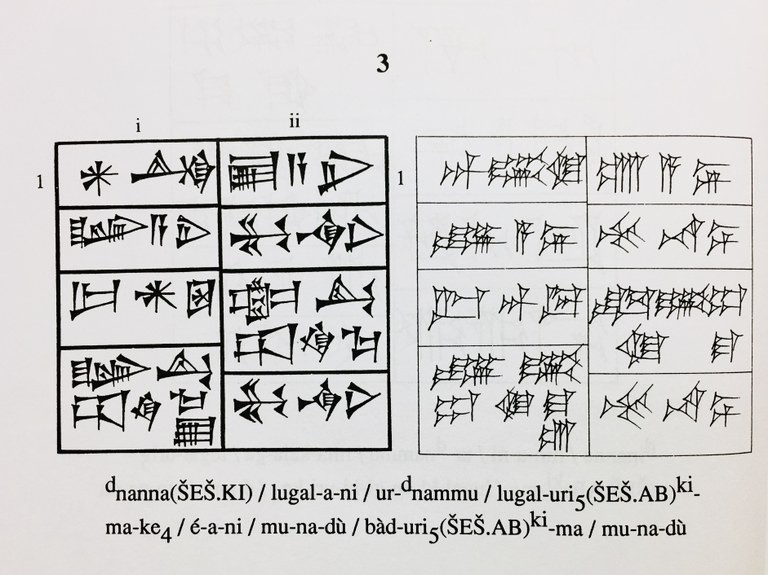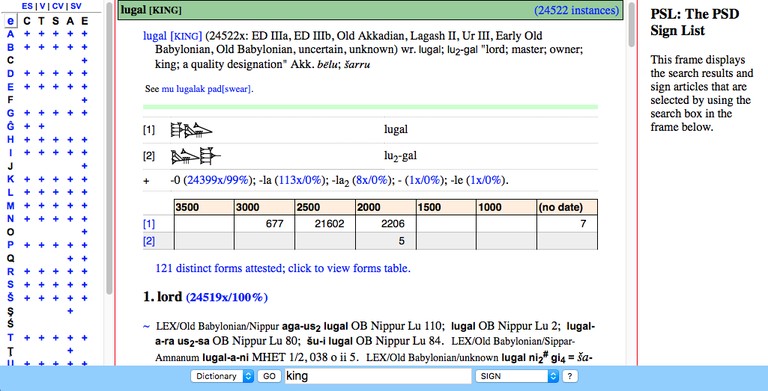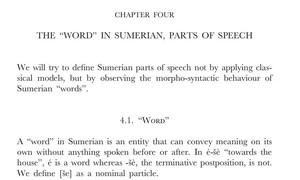Embarking on the journey to learn Sumerian, an ancient language with roots dating back to 3200 BCE, is an exciting endeavor, and LEARNS.EDU.VN is here to guide you. While traditionally, Akkadian serves as a stepping stone, direct routes into Sumerian are increasingly accessible. Delve into this comprehensive guide to discover the resources, strategies, and insights you’ll need to unlock the secrets of Sumerian. Explore the grammars, lexica, and textual resources available to begin your Sumerian adventure and gain knowledge of ancient Mesopotamian history and culture.
1. Understanding the Allure of Sumerian
Sumerian holds a unique position as one of the oldest deciphered languages, offering a direct connection to antiquity. Surviving on clay tablets, its written form dates back to approximately 3200 BCE. Although it likely ceased to be a spoken language around the mid-second millennium BCE, Sumerian continued its existence as a literary language for at least another 900 years. Evidence suggests that its study persisted even during the time of Alexander the Great and possibly into the second century CE.
1.1. The Historical Context
By 1800 BCE, Akkadian (Babylonian and Assyrian) had already become the predominant vernacular language in the region, potentially much earlier. Sumerian is inscribed in cuneiform, a script characterized by wedge-shaped signs. These signs were created by pressing the sharpened end of a reed stylus into moist clay tablets. The earliest tablets predominantly contain administrative records and teaching materials from the late fourth millennium BCE. Over time, Sumerian literature expanded to encompass a wide array of forms and genres, including royal inscriptions like the Gudea Cylinders and early instances of epic poetry, such as the Matter of Aratta. Myths, hymns, laments, wisdom literature, and practical texts like grammatical documents, date lists, and mathematical works have all endured in Sumerian.
2. Why Learn Sumerian?
Learning Sumerian opens doors to understanding one of the earliest complex societies and their intellectual achievements. Here are some compelling reasons to study this ancient language:
- Access to Original Texts: Sumerian provides direct access to the oldest written records of human civilization, including legal codes, myths, and administrative documents.
- Linguistic Significance: As a language isolate, Sumerian presents unique linguistic features that can deepen your understanding of language development and typology.
- Cultural Insight: Studying Sumerian allows you to engage with the culture, religion, and worldview of the ancient Mesopotamians.
- Historical Research: Proficiency in Sumerian is invaluable for researchers in history, archaeology, and ancient Near Eastern studies.
- Intellectual Challenge: Learning Sumerian offers a stimulating intellectual challenge that expands your cognitive abilities.
3. Setting Achievable Learning Goals
Before diving into Sumerian, it’s crucial to set realistic goals. Consider the following:
3.1. Identifying Your Objectives
- Reading Knowledge: Aim to read and understand basic Sumerian texts.
- Research Purposes: Focus on specific texts or periods relevant to your research.
- Personal Enrichment: Satisfy your curiosity about ancient languages and cultures.
- Linguistic Analysis: Explore Sumerian’s unique linguistic features.
3.2. Time Commitment
Learning Sumerian requires a significant time investment. Dedicate consistent study time each week, considering:
- Beginner Level: 5-10 hours per week for grammar, vocabulary, and sign practice.
- Intermediate Level: 10-15 hours per week for reading texts and advanced grammar.
- Advanced Level: 15+ hours per week for research and in-depth analysis.
3.3. Milestones
Establish milestones to track your progress and stay motivated:
- Month 1: Master basic cuneiform signs and grammar fundamentals.
- Month 3: Read and translate simple inscriptions and administrative texts.
- Month 6: Tackle more complex literary texts and expand vocabulary.
- Year 1: Conduct independent research using Sumerian sources.
4. Navigating the Resources: A Curated Guide
Starting your Sumerian journey requires access to the right resources. Here’s a breakdown of essential materials:
4.1. Grammars
- Introduction to Sumerian Grammar by D.A. Foxvog: Available online through the Cuneiform Digital Library Initiative (CDLI), this book provides an overview of the writing system, a complete grammar, and review exercises. This accessible resource is great for beginners.
- Elementary Sumerian Glossary by D.A. Foxvog: Also available through CDLI, this glossary complements Foxvog’s grammar, offering definitions for basic Sumerian vocabulary.
- Manual of Sumerian Grammar and Texts by J.L. Hayes: This manual offers a comprehensive approach to Sumerian grammar and includes selected texts for practice. Available at PJ4013 .H38 2000.
- An Introduction to the Grammar of Sumerian by G. Zólyomi: Available online, this grammar provides a thorough introduction to the structure of Sumerian.
- Sumerian Grammar by D.O. Edzard: Recommended for students with some background, this grammar offers detailed explanations of Sumerian syntax and morphology. Located at PJ4013 .E38 2006.
- “Sumerian” chapter in the Cambridge Encyclopedia of the World’s Ancient Languages by P. Michalowski: Edited by R. Woodward, this chapter provides a concise overview of Sumerian within a broader linguistic context. Find it at P371 .C36 2004.
- The Sumerian Language: An Introduction to its History and Grammatical Structure by M.-L. Thomsen: This book delves into the history and grammatical structure of Sumerian, suitable for intermediate to advanced learners. Available at PJ4021 .T46 1984.
- A Descriptive Grammar of Sumerian by B. Jagersma: This dissertation offers an in-depth analysis of Sumerian grammar. It is available online for free.
4.2. Lexica
- Electronic Pennsylvania Sumerian Dictionary (ePSD): This online lexicon is an ongoing project that offers definitions, usage statistics, and citations from Sumerian texts. It is an invaluable resource for understanding Sumerian vocabulary.
- Lexique sumérien-français by P. Attinger: This French lexicon is another excellent resource, particularly for those comfortable with French. It is available online for free.
- Leipzig-Münchner Sumerischer Zettelkasten: This online glossary is another helpful tool for vocabulary acquisition. It is available online for free.
4.3. Sign Lists
- Altbabylonische Zeichenliste der sumerisch-literarischen Texte by C. Mittermayer: This sign list collects 480 cuneiform signs from literary texts of the Old Babylonian period, supplemented with quotations and commentary. Available at PJ3223 .M455 2006.
- An Akkadian Handbook: Helps, Paradigms, Glossary, Logograms, and Sign List by D.B. Miller: While focused on Akkadian, this handbook includes a sign list that can be helpful for learning cuneiform in general. Find it at PJ3251 .M75 2014.
4.4. Primary Texts
- Cuneiform Digital Library Initiative (CDLI): This online portal curates cuneiform tablets, inscriptions, and other text artifacts for open-access research. It contains images and transcriptions of thousands of Sumerian texts.
- Electronic Text Corpus of Sumerian Literature (ETCSL): This website presents transliterations and English translations of Sumerian literary texts, along with bibliography and source information.
- Electronic Text Corpus of Sumerian Royal Inscriptions: Part of the Open Richly Annotated Cuneiform Corpus (ORACC) project, this resource hosts inscriptions that have been transliterated, translated into English and Hungarian, and morphologically annotated.
- A Sumerian Reader by K. Volk: This reader contains 44 texts ranging from royal inscriptions to legal and economic documents. It includes transliterations, a sign list, phonological charts, and glossaries. Available at PJ4014 .V65 1997.
4.5. Translations
- The Harp that Once… by T. Jacobsen: This volume presents verse translations of Sumerian poetry with introductions and notes for a general audience. Available at PJ4083 .H37 1987.
- The Literature of Ancient Sumer edited by J. Black, G. Cunningham, E. Robson, and G. Zólyomi: This comprehensive anthology covers the full range of Sumerian literary genres. It is available at PJ4083 .L57 2004 and as an ebook.
- Epics of Sumerian Kings: The Matter of Aratta by H.L.J. Vanstiphout: This book focuses on the earliest known examples of epic poetry, including “Enmerkar and the Lord of Aratta.” It is available at PJ4083. V36 2004 and as an ebook.
5. Strategies for Effective Learning
Learning Sumerian can be challenging, but these strategies can help you succeed:
5.1. Start with Cuneiform
Familiarize yourself with the cuneiform writing system. Practice writing the signs and learn their phonetic values. Use sign lists and online resources to aid your practice.
5.2. Focus on Grammar Fundamentals
Master the basic grammar rules, including noun declensions, verb conjugations, and sentence structure. Use a grammar textbook and do exercises to reinforce your understanding.
5.3. Build Vocabulary
Learn new words regularly and use them in context. Utilize the ePSD and other lexica to find definitions and examples.
5.4. Read Simple Texts
Begin with simple inscriptions and administrative texts. Gradually work your way up to more complex literary texts.
5.5. Use Translations as a Guide
Read translations alongside the original texts to help you understand the meaning. However, be aware that translations can be subjective and may not always be accurate.
5.6. Join a Study Group or Find a Tutor
Connect with other learners or find a tutor who can provide guidance and support. Discussing the material with others can help you clarify your understanding and stay motivated.
5.7. Immerse Yourself in the Culture
Learn about the history, culture, and religion of ancient Mesopotamia. This will provide context for the texts you are reading and make the language more meaningful.
6. Overcoming Common Challenges
Learning Sumerian presents several unique challenges:
- Complex Writing System: Cuneiform is a complex writing system with hundreds of signs.
- Language Isolate: Sumerian is a language isolate, meaning it is not related to any other known language.
- Limited Resources: Compared to other ancient languages, there are fewer resources available for learning Sumerian.
- Evolving Understanding: The understanding and interpretation of Sumerian are still evolving, which can make it difficult to find definitive answers.
To overcome these challenges, be patient, persistent, and resourceful. Utilize all available resources, seek guidance from experts, and don’t be afraid to ask questions.
7. The Role of Technology in Sumerian Studies
Technology plays a crucial role in modern Sumerian studies. Online resources like the CDLI, ETCSL, and ePSD have made it easier than ever to access texts, translations, and other learning materials. Digital tools can also aid in cuneiform sign recognition and transliteration.
7.1. Cuneiform Fonts and Software
- Cuneify Plus: This website can turn transliterated forms into cuneiform unicode.
7.2. Online Dictionaries and Corpora
- Electronic Pennsylvania Sumerian Dictionary (ePSD): As mentioned above, this is an essential resource for vocabulary and usage.
- Cuneiform Digital Library Initiative (CDLI): Provides access to a vast collection of digitized cuneiform tablets.
- Electronic Text Corpus of Sumerian Literature (ETCSL): Offers transliterations and translations of Sumerian literary texts.
8. Resources Beyond the Written Word: Cultural and Historical Context
To truly understand Sumerian, one must also explore its cultural and historical context.
- The Sumerian World edited by H.E.W. Crawford: This volume contains over thirty chapters on material remains, systems of government, daily life, and neighboring societies. Available at DS72 .S864 2013 and as an ebook.
- Cuneiform by I. Finkel and J. Taylor: This book provides an efficient overview of the cuneiform script and is beautifully illustrated with photographs of the British Museum’s collection. Available at NYU DS69.5 .F55 2015.
- Art of Mesopotamia by Z. Bahrani: This book provides context on the materiality of Sumerian and its art historical context. Find it at N5370 .B16 2017.
9. The Practice of Cuneiform Writing
While the primary focus in learning cuneiform languages is on reading, practicing writing can enhance your understanding of the script.
- Workbook of Cuneiform Signs by D. Snell: This workbook encourages active use of the signs to improve retention. The signs are given in a Neo-Assyrian style, which may not match the forms seen in most Sumerian texts, but it can still be a helpful exercise. Available at PJ3193 .S64 1979.
10. The Future of Sumerian Studies
The field of Sumerian studies is constantly evolving. New texts are being discovered, new interpretations are being proposed, and new technologies are being developed. By learning Sumerian, you can contribute to this exciting field and help to unlock the secrets of the ancient world.
10.1. Emerging Trends
- Digital Humanities: The use of digital tools and methods to study Sumerian language and culture.
- Interdisciplinary Research: Collaboration between linguists, archaeologists, historians, and other scholars to gain a more comprehensive understanding of Sumerian civilization.
- Open Access Resources: The increasing availability of online resources, such as digitized texts and open-access publications.
10.2. Table: Updated Information on Sumerian Learning Resources
| Resource Type | Description | URL/Location | Key Features |
|---|---|---|---|
| Online Dictionary | Electronic Pennsylvania Sumerian Dictionary (ePSD) – A comprehensive dictionary with definitions, usage statistics, and citations from Sumerian texts. | http://epsd.psd.museum.upenn.edu/nepsd-frame.html | Extensive word entries, example sentences, frequency analysis, links to original texts. |
| Text Corpus | Electronic Text Corpus of Sumerian Literature (ETCSL) – Offers transliterations and English translations of Sumerian literary texts, along with bibliography and source information. | http://etcsl.orinst.ox.ac.uk/ | Wide range of literary texts, searchable database, reliable translations. |
| Digital Library | Cuneiform Digital Library Initiative (CDLI) – An online portal that curates cuneiform tablets, inscriptions, and other text artifacts for open-access research. | https://cdli.ucla.edu/ | High-resolution images of tablets, detailed metadata, searchable by text and object characteristics. |
| Grammar Textbook | Introduction to Sumerian Grammar by D.A. Foxvog – Provides an overview of the writing system, a complete grammar, and review exercises. | https://cdli.ucla.edu/pubs/cdlp/cdlp0002_20160104.pdf | Comprehensive coverage of Sumerian grammar, suitable for beginners, available for free. |
| Sign List | Altbabylonische Zeichenliste der sumerisch-literarischen Texte by C. Mittermayer – Collects 480 cuneiform signs from literary texts of the Old Babylonian period, supplemented with quotations and commentary. | Check university libraries or specialized bookstores | Detailed sign explanations, references to literary texts. |
| Translation Anthology | The Literature of Ancient Sumer edited by J. Black, G. Cunningham, E. Robson, and G. Zólyomi – A comprehensive anthology covering the full range of Sumerian literary genres. | Available at major libraries and bookstores; eBook options | Diverse selection of texts, scholarly introductions, and reliable translations. |
| Online Writing Tool | Cuneify Plus – A tool to convert transliterated Sumerian into cuneiform Unicode for digital writing. | http://cuneifyplus.arch.cam.ac.uk/ | Easy conversion, supports various Unicode fonts. |
| Cultural Context | The Sumerian World edited by H.E.W. Crawford – Contains chapters on material remains, government systems, daily life, and neighboring societies. | Available at major libraries and bookstores; eBook options | Broad overview of Sumerian civilization, written by experts in various fields. |
| Morphology Resource | Sumerian Morphology by G. Rubio – Provides insights into the morphological structures of Sumerian. | https://www.degruyter.com/document/doi/10.1515/9783110190729.2.473/html | Provides detailed descriptions of morphemes and their functions, enhancing linguistic precision. |
| Grammatical Structure | The Sumerian Language: An Introduction to its History and Grammatical Structure by M.-L. Thomsen – Gives detailed history and grammatical insight. | Check university libraries or specialized bookstores | Helps in understanding the structural nuances of the language and its evolution. |





11. FAQ: Your Questions Answered
11.1. Is Sumerian difficult to learn?
Yes, Sumerian can be challenging due to its complex writing system, unique grammar, and limited resources. However, with dedication and the right resources, it is possible to learn.
11.2. Do I need to learn Akkadian first?
Traditionally, learning Akkadian first was recommended, but it is not strictly necessary. You can learn Sumerian directly, especially with the resources available today.
11.3. How long does it take to learn Sumerian?
It depends on your goals and time commitment. A basic reading knowledge can be achieved in a year or two, while fluency requires several years of dedicated study.
11.4. What are the best resources for learning Sumerian?
The Electronic Pennsylvania Sumerian Dictionary (ePSD), the Cuneiform Digital Library Initiative (CDLI), and the Electronic Text Corpus of Sumerian Literature (ETCSL) are essential online resources. Grammar textbooks by Foxvog, Hayes, and Zólyomi are also highly recommended.
11.5. Can I learn Sumerian on my own?
Yes, it is possible to learn Sumerian on your own, but it can be helpful to join a study group or find a tutor for guidance and support.
11.6. What is the best way to practice cuneiform?
Use sign lists and online resources to practice writing the signs. You can also try creating your own clay tablets and using a stylus to write on them.
11.7. How can I find Sumerian texts to read?
The CDLI and ETCSL are excellent sources for finding Sumerian texts. You can also find texts in grammar textbooks and readers.
11.8. Are there any online courses for Sumerian?
While online courses dedicated solely to Sumerian are rare, platforms offering courses in Akkadian or Ancient Near Eastern Studies often include elements relevant to Sumerian. Check university websites and online learning platforms.
11.9. What career opportunities are available for Sumerian scholars?
Career opportunities include positions in academia, museums, libraries, and archaeological organizations. A strong background in Sumerian can also be valuable for researchers in history, linguistics, and ancient Near Eastern studies.
11.10. Where can I find a community of Sumerian learners?
Online forums, social media groups, and academic conferences are great places to connect with other Sumerian learners. Check websites like Reddit and Facebook for relevant groups.
12. Conclusion: Your Sumerian Journey Begins Now
Learning Sumerian is an ambitious but rewarding undertaking. By utilizing the resources and strategies outlined in this guide, you can embark on a journey to unlock the secrets of one of the world’s oldest languages. Remember to set realistic goals, stay motivated, and seek guidance when needed. With dedication and perseverance, you can achieve your Sumerian learning goals and gain a deeper understanding of ancient Mesopotamian civilization.
Ready to delve deeper into the world of Sumerian? At LEARNS.EDU.VN, we offer a wide range of resources and courses to support your learning journey. Explore our website today to discover more about Sumerian language and culture, and take the first step towards mastering this fascinating ancient language.
Contact us:
Address: 123 Education Way, Learnville, CA 90210, United States
Whatsapp: +1 555-555-1212
Website: learns.edu.vn
